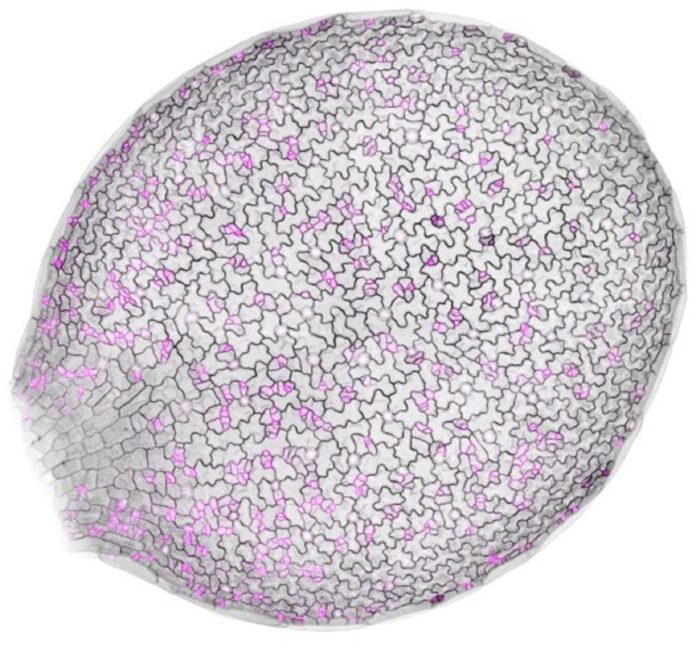Asymmetric cell divisions determine distinct cell fates throughout kingdoms. Preferential inheritance of destiny determinants into one daughter cell usually depends on polarity-cytoskeleton interactions in metazoans.
When a stem cell divides, one daughter cell remains a stem cell while the other begins its developmental process. However, both daughter cells require particular and distinct biological components to complete their destinies. During the split, animal stem cells use the cytoskeleton, a temporary network of structural tubules, to physically pull the necessary components from the parent cell into each daughter cell.
Plants have stem cells that must transfer different elements to their daughters. However, previous research appears to have ruled out using an “animal-style” cytoskeleton to achieve this task. What plants did instead remained a mystery until now. Stanford University researchers discovered that plant cells, like animal stem cells, use the cytoskeleton. However, the plant cells they studied pushed it away instead of tugging on it.
Andrew Muroyama, a former postdoctoral fellow at Stanford, currently an assistant professor at the University of California, San Diego, and the lead author of the paper, said, “Instead of using the cytoskeleton to say Divide this way!’ the plants said, ‘DON’T divide this way!’ ”
This discovery could help researchers develop plants that are more adaptive to changing surroundings, which is an important challenge as the globe continues to face climate change.
He said, “Understanding how stem cells divide in animals has been important for understanding various human diseases and has impacted translational medicines; I hope that improving our understanding of how stem cells divide in plants might inform engineering applications in the future.”
Researchers in the lab of Dominique Bergmann, the Shirley R. and Leonard W. Ely, Jr. Professorship in the School of Humanities and Sciences professor of biology, began this work by looking into polarity complexes, which are small clusters of proteins that are required in each cell to build the proper size and shape of leaves.
Polarity complexes aid in the orientation of dividing leaf stem cells. They knew those proteins were important in cell division. However, they needed to learn how they accomplished it at the molecular level.
The researchers created plant cell lines that expressed fluorescent versions of polarity complex and cytoskeletal proteins, then spent hundreds of hours in a dark room observing the glowing proteins’ movements as cells grew, divided, and repeated.
The researchers quickly saw that some cells were not dividing according to the “shortest wall rule,” which governs plant cell division ordinarily. In some cases, the polarity complex was just where the wall would need to be constructed. It somehow stymied construction. The researchers concluded from a series of rigorous studies that the polarity complex was pushing away the microtubules that would otherwise allow the wall to be built.
Bergmann focuses on plant resilience, or how plants adapt to changing environments. Plants adapt to their environment by modifying their leaves, branch patterns, or rates of respiration or sugar synthesis. Modifying stem cell behavior makes it possible to change plant design or assist plants in adapting to a changing climate.
Stem cells make decisions regarding how to respond to environmental cues. Bergmann likens the polarity complex in this process to a project manager who gives instructions to guarantee that the stem cell splits correctly.
Bergmann said, “This construction manager receives signals from the environment, decides what to do, and tells the cell, Yes, you should divide.’ But then it also says, Now you’ve divided. Go off and seek your fortune. ”
Now that the researchers understand how this manager functions, they can establish its involvement in upstream and downstream processes and devise ways to harness its power.
This research was funded by the National Institutes of Health, University of California, San Diego, Stanford University, and HHMI.
Journal Reference:
- Muroyama, A., Gong, Y., Hartman, etal. Cortical polarity ensures its own asymmetric inheritance in the stomatal lineage to pattern the leaf surface. Science. DOI: 10.1126/science.add6162
